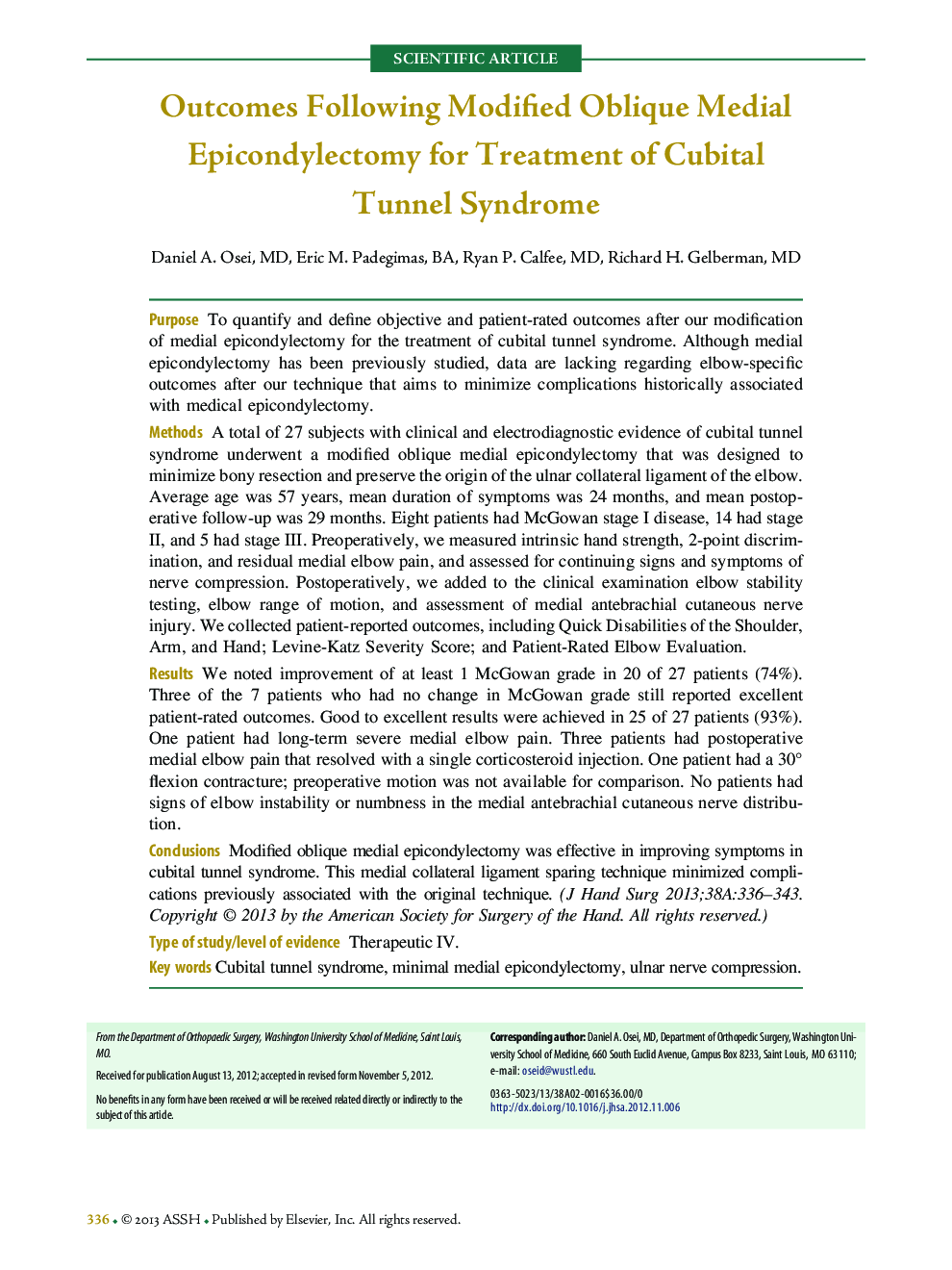| Article ID | Journal | Published Year | Pages | File Type |
|---|---|---|---|---|
| 4068311 | The Journal of Hand Surgery | 2013 | 8 Pages |
PurposeTo quantify and define objective and patient-rated outcomes after our modification of medial epicondylectomy for the treatment of cubital tunnel syndrome. Although medial epicondylectomy has been previously studied, data are lacking regarding elbow-specific outcomes after our technique that aims to minimize complications historically associated with medical epicondylectomy.MethodsA total of 27 subjects with clinical and electrodiagnostic evidence of cubital tunnel syndrome underwent a modified oblique medial epicondylectomy that was designed to minimize bony resection and preserve the origin of the ulnar collateral ligament of the elbow. Average age was 57 years, mean duration of symptoms was 24 months, and mean postoperative follow-up was 29 months. Eight patients had McGowan stage I disease, 14 had stage II, and 5 had stage III. Preoperatively, we measured intrinsic hand strength, 2-point discrimination, and residual medial elbow pain, and assessed for continuing signs and symptoms of nerve compression. Postoperatively, we added to the clinical examination elbow stability testing, elbow range of motion, and assessment of medial antebrachial cutaneous nerve injury. We collected patient-reported outcomes, including Quick Disabilities of the Shoulder, Arm, and Hand; Levine-Katz Severity Score; and Patient-Rated Elbow Evaluation.ResultsWe noted improvement of at least 1 McGowan grade in 20 of 27 patients (74%). Three of the 7 patients who had no change in McGowan grade still reported excellent patient-rated outcomes. Good to excellent results were achieved in 25 of 27 patients (93%). One patient had long-term severe medial elbow pain. Three patients had postoperative medial elbow pain that resolved with a single corticosteroid injection. One patient had a 30° flexion contracture; preoperative motion was not available for comparison. No patients had signs of elbow instability or numbness in the medial antebrachial cutaneous nerve distribution.ConclusionsModified oblique medial epicondylectomy was effective in improving symptoms in cubital tunnel syndrome. This medial collateral ligament sparing technique minimized complications previously associated with the original technique.Type of study/level of evidenceTherapeutic IV.
